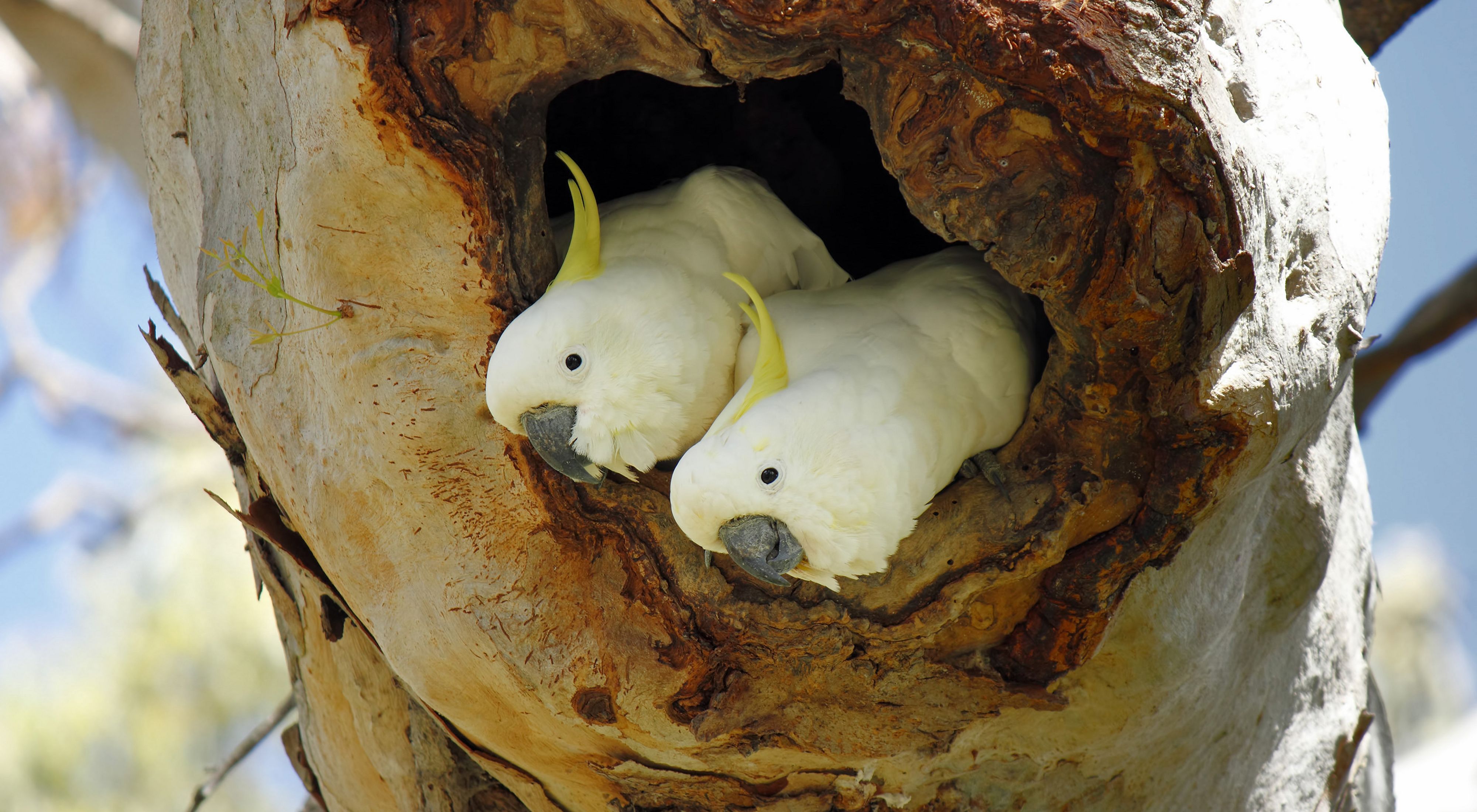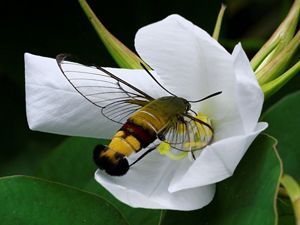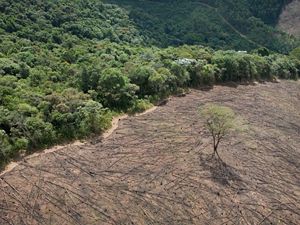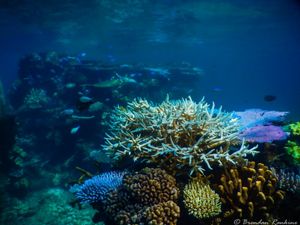Cockatoos are a family of large, long-lived and very noisy parrots with moveable crests. Australia is home to 14 species with others also found in Papua New Guinea, Indonesia, the Solomon Islands and the Philippines.
Cockatoo facts
- Cockatoos have a preferred “footedness” analogous to human handedness. Unlike humans, most are left-footed.
- In captivity, cockatoos have a lifespan similar to humans.
- The word ‘cockatoo’ has its origins in Malay and means ‘vice’ or ‘grip’ because of their incredibly strong beak.
- Australia’s commonest and most widespread cockatoo is the Galah.
Type of Cockatoos
White cockatoos
Four of the Australian species are predominantly white in colour including the very familiar and spectacular Sulphur-crested Cockatoo. These noisy birds feed on berries, seeds, nuts and roots. They’re equally at home in the city and in the bush.
Help protect wildlife habitat
You can help conserve Australia’s natural landscapes & crucial wildlife habitat.
DONATE NOW >>Sulphur-crested cockatoos



Get email updates
Find out how we're helping to protect precious habitat across Australia
Get updatesBlack cockatoos
Six Australian species are predominantly black. This includes the endangered Carnaby’s Black-Cockatoo of south-west Western Australia. This migratory species is declining rapidly due to the loss of around 87% of its woodland breeding habitat and as a result is listed as endangered. Yellow-tailed Black-Cockatoos are also declining due to urban expansion.
The highly decorative plumage of the Red-tailed Black-Cockatoo make it a favourite amongst bird watchers. Females’ bodies are covered in black feathers edged in gold while their heads carry yellow spots. Their tails are like the colours of the sunset from yellow, orange to red. Young males emerge from the nest three months after hatching looking like their mothers but as they mature at about three years of age, their pure black adult feathers emerge. Their tail bands are a solid scarlet red.
Both Carnaby’s and Red-tailed Black-Cockatoos can be found in the Great western Woodlands. Find out more about this, the largest temperate woodlands in the world here.
Black cockatoos




Gang-gang Cockatoo
Known in Canberra as ‘squeaky doors’ because of the sound they make, Gang-gang Cockatoos are quite unique in appearance. Only the male has a bright red face and crest.
_Dean-Howe.jpg?wid=640)
Pink cockatoos
Major Mitchell's Cockatoo
At home in the harsh deserts of Australia’s interior, these cockatoos make for a spectacular sight in the sandy landscapes of places like Martu Country in the Western Desert. Unlike most other cockatoos, breeding pairs of Pink Cockatoos (as they are also know) are quite territorial and don’t allow other pairs of their kind to breed within their extensive home ranges.
Galahs
The humorous antics of these iconic Australian cockatoos led to their name being applied to anyone acting the fool. Galahs do indeed sometimes seem to be just having fun like taking turns to slide down cables and wires. They are easy to identify with their distinctive pink and grey plumage. They have a bouncing acrobatic flight and feed on seeds, mostly from the ground. They form huge, noisy flocks that roost together at night. Did you know that Galahs also form permanent pair bonds?
Pink cockatoos





Help protect Australia’s threatened species
Our planet is currently experiencing the worst wave of species die-offs since the loss of the dinosaurs 65 million years ago. And here in Australia,86 of our native flora and fauna species now critically endangered. We're running a real risk of losing some of our most iconic species forever.
Habitat destruction, introduced species and urban expansion threaten the survival of our native species. With the decline of Australia’s native wildlife, our ecosystem hangs in the balance. Once they’re gone, they’re gone.
You can help make a difference by making a donation today.
Stay updated!
Find out how to help protect precious habitat across Australia. Join our mailing list now.
SIGN UP>>


